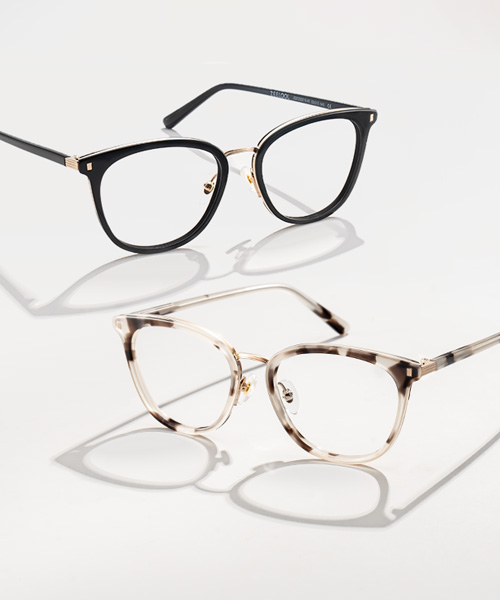What are polarized lenses?
Polarized lenses are a special type of lens, also known as polarized lenses sunglasses. They contain a special layer of polarizing filters with a specific molecular structure that allows light waves to pass through only in a specific direction while blocking light waves from other directions. As a result, polarized lenses effectively block polarized light from horizontal directions, such as reflected light from water, snow or shiny surfaces, reducing glare and reflections. The light that passes through polarized lenses is purer, reducing glare and enhancing visual clarity.

Key features and functions of polarized lenses include:
Glare Reduction:
Polarized lenses significantly reduce glare, especially reflected light from water, snow, car windows or road surfaces. It helps to improve visual comfort and clarity so as to reduce eye fatigue and discomfort.
Enhanced contrast:
By reducing the interference of scattered light, polarized lenses improve visual contrast, making objects sharper and more detailed. It helps to improve visual perception and detail recognition.
UV Protection:
Almost polarized lenses also provide protection from ultraviolet (UV) radiation, which helps protect the eyes from UV damage.
What is tinted lens?
Tinted lens is a type of lens for sunglasses or eyeglasses with a specific color. Compared to regular clear lens, tinted lens changes the color and brightness of light by adding color filters, which affects how people see the environment.

Tinted lenses sunglasses come in a wide variety of colors, the common ones being:
Gray lenses:
Gray lenses are one of the most common choices. They reduce the brightness of the light without changing the true nature of the color. Gray lenses provide natural color perception during outdoor activities and are suitable for daily use.
Brown/brown colored lenses:
Brown or brown colored lenses enhance the contrast, which improve the perception of depth, and sharpen the outlines of objects. It reduces the transmission of blue light that makes them suitable for use in outdoor activities, especially on cloudy or overcast days.
Green lenses:
Green lenses enhance sensitivity to red and brown colors that make them brighter. These lenses perform well in outdoor sports and high light conditions so as to provide a comfortable visual experience.
Blue Lenses:
Blue lenses reduce transmission of blue light, reduce glare, and provide a clear visual experience. They are commonly used for marine activities such as fishing or sailing to reduce reflected light from the water.
Difference between Polarized and Tinted Lenses:
Polarized lenses and tinted lenses are two different types of lenses and they have some differences in function and features.

1. Functional differences:
The primary function of polarized lenses is to reduce glare, such as reflections from water, snow or shiny surfaces. They effectively block horizontally polarized light through built-in polarizing filters, and reduce glare from reflections and refractions, which helps to enhance visual comfort, improve clarity, and reduce eye fatigue in bright outdoor conditions.
Tinted lenses function by adding color filters to change the color and brightness of light. They can adjust the hue, contrast and brightness of ambient light so as to provide a different visual experience and adapt to the needs of different environments.
2. Differences in glare reduction ability:
Polarized lenses have significant glare reduction capabilities, especially for light reflected horizontally from water, snow or car windows. They are effective in blocking glare that provide a clearer field of vision and reduce eye fatigue.
Tinted lenses have a lesser ability to reduce glare. The primary purpose of tinted lenses is to improve visual comfort by enhancing or altering color perception, reducing brightness and providing a degree of UV protection. While tinted lenses reduce the transmission of light in certain spectral ranges, they do not block light in certain directions like polarized lenses.
3. Different uses:
Polarized lenses are primarily dedicated to reducing glare and improving visual clarity in bright, reflective environments.
Tinted lenses focus on changing color perception and reducing brightness to provide a more comfortable visual experience in a variety of lighting conditions.
4. Different applicable scenarios:
Polarized lenses are particularly useful in outdoor activities, especially in strong sunlight conditions, such as water sports, skiing, fishing, driving, etc. They significantly reduce glare from water, snow or other reflective surfaces to provide clear vision.
Tinted lenses have wider applicability which are suitable for outdoor activities in daily life. Tinted lenses of different colors can adjust the hue and contrast of light, provide a comfortable visual experience, and adapt to different environments and light conditions.

























